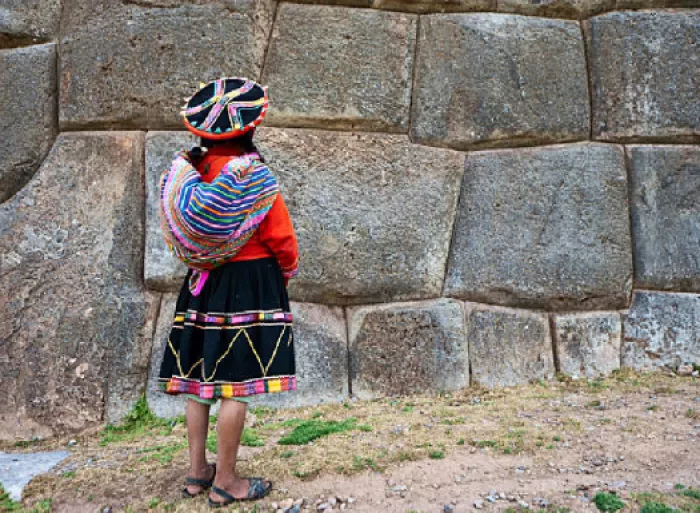



1. Lima
Lima, the capital, is the main gateway to Peru. The city has many interesting sites that are well worth spending a day or two in. Visit the historical center, its museums, and its great buildings of colonial architecture such as the monastery of San Francisco. On the seaside, there are ultramodern neighborhoods, such as Miraflores, the most popular area for accommodation. Don't forget to treat yourself with a good restaurant to enjoy Peruvian cuisine, one of the most famous in the world!
2. Machu Picchu
We don’t present it anymore, Machu Picchu is THE main tourist destination of Peru. Its reputation however is not overrated, after all, the site was elected one of the 7 wonders of the modern world and is also classified as a world heritage site by UNESCO.
Machu Picchu is really unmissable in an itinerary in Peru. However, keep in mind that the entrance to the site is limited so it is highly recommended to book your visit in advance to avoid unnecessary concerns.
3. Arequipa
The second largest city of Peru, Arequipa is a charming town located in the south at an altitude of approximately 2 400 meters. Its historical center of colonial style is particularly well preserved and has the particularity to have been built in volcanic white stone, that’s why people are used to call it the “white city”. During your walk through the city, be sure to save time to visit the peaceful and colorful scenery of the huge Santa Catalina convent, the largest convent in the world!
4. Colca Valley
Located about 3 hours north of Arequipa, the Colca Valley features steep canyons and agricultural terraces, punctuated by small quiet villages with the majestic presence of several volcanoes and glaciers in the background.
On the river banks, there are numerous small villages founded during the Spanish colonial period and formerly inhabited by the Collaguas and Cabanas populations. The current local population preserves ancestral traditions and continues to use the pre-inca terraces for the cultivation of quinoa, corn, barley, and wheat.
The Colca Canyon is home to animals such as the vicuña, as well as more than 100 species of birds and numerous endemic plants (about 30 types of cactus). Overlooking the valley, at 3400 m high, stands the Mirador del Cruz del Condor, a natural lookout that offers a superb view of the canyon and the flight of the majestic Andean condors. These birds, venerated by the Incas, can reach up to 3.5m in wingspan. The Colca Valley is also ideal for recreational and sports activities such as trekking, rafting, climbing, cycling, thermal baths, etc.
5. Puno
Puno holds the title of the folkloric capital of Peru! Its music is the richest of the Andes and there are more than 300 local dances. During the Feast of the Virgen de la Candelaria, in February, the streets of the city and the surrounding villages come alive with music and dances.
Historically, the region is important for having sheltered one of the most important cultures of the pre-Inca era, the Tiahuanaco culture, whose vestiges can be found in the museums and archaeological sites of the city. But the main attraction of Puno is to take a boat trip on the calm waters of Lake Titicaca.
6. Lake Titicaca
With its 3800 m of altitude, the lake Titicaca is the highest navigable lake of the world and it is shared between Peru and Bolivia. It counts about forty islands, some of which are inhabited. The most populated are the Isla del Sol in Bolivia, as well as the Amantani and Taquile islands on the Peruvian side. In addition to these natural islands, we can see artificial islands created by the Uros. These floating spaces on stilts are made from reeds and have become a must-see tourist attraction in the region.
It is possible to spend a night in a local house on the main islands of the lake, an unmissable opportunity to share with the local communities, learn about their way of life, and participate in their customs.
7. Trujillo
Trujillo is an economic center located on the northern coast of Peru. The conquistador Diego de Almagro founded the city in 1535 in an area already inhabited by indigenous civilizations. Trujillo, although modern, has a well-preserved colonial core and numerous pre-Columbian ruins, the most famous of which are Chan Chan and the Huacas del Sol and de la Luna (the temples of the Sun and the Moon).
It is also a culturally important city, particularly known for its traditional dances and excellent regional cuisine.
8. Chiclayo
A few hours north of Trujillo is the city of Chiclayo, the second-largest city in northern Peru. Its proximity to the coast and its location along the Pan-American Highway has made Chiclayo a commercial center that rivals Trujillo. The city is the land gateway to other parts of the northern interior of Peru, with the main highway running from Chiclayo to Tarapoto in the high jungle. Chiclayo is also a popular base for exploring the region's archaeological sites (especially Sipán) and its excellent museums.
If you are planning a trip to Peru you can rely on a specialist to plan a personalized itinerary that will really meet your interests and demands according to your profile. An agency specialized in this segment can also program the entire trip so that you don't have to worry about emergencies, hotel reservations, tours booking, and logistics in general. In other words, you can compose a package for Peru with much more tranquility, so that your only concern will be to enjoy your adventure to the fullest.
----------------------------
Did you enjoy this article? If you wish to explore one of the most amazing continents on this planet, be sure to check out all of our tips and itineraries to help you plan an unforgettable trip to South America.
We hope we have been helpful today!
----------------------------